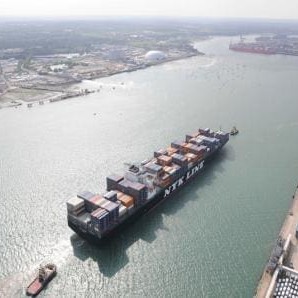 The Australian Competition and Consumer Commission has released its annual container stevedoring monitoring report, suggesting competition at the wharf should provide greater levels of efficiency.
The Australian Competition and Consumer Commission has released its annual container stevedoring monitoring report, suggesting competition at the wharf should provide greater levels of efficiency.
“Australian stevedoring has dramatically lifted its performance since the 1990’s," the ACCC report said.
"But now, increased competition can provide the spur for even higher levels of efficiency and service,” chairman Rod Sims said.
Reforms to the Australian stevedoring industry in the late 1990’s mean that the industry has been well placed to meet the strong growth in container throughput at Australia’s ports.
Both the equipment and the workforce have become more productive, which has led to a fall in the average cost of handling containers. As a result, shipping lines (and exporters) now receive a better service and face lower real stevedoring charges.
Since 1998, stevedores had increased the efficiency of their operations, and as a result real unit costs have fallen by 45 percent, the report found. Much of this cost saving had been passed on to shipping lines, with unit revenues (a proxy for stevedoring prices) falling by 38pc over the same period.
The stevedores’ productivity had also improved over the last 14 years, with cranes moving 30.1 containers per hour in June 2012 compared to 18.7 in June 1998.
Similarly, the productivity of the stevedores’ work-forces had improved considerably over the last decade.
In 2011-12, however, industrial disputes including strike action and reported ‘go-slow’ strategies, disrupted stevedoring performance.
"If this sort of disruption were to continue, it could undermine expected future gains from greater capacity and competition," Mr Sims said.
Negotiation of new enterprise agreements across several terminals during 2011-12 also coincided with significantly higher labour costs, which increased by 7.5pc, the highest annual percentage rise (in nominal terms) in the history of the ACCC’s monitoring program.
Persistently high returns (23pc on average over the last decade) had previously led the ACCC to question the intensity of competition in the industry. The addition of capacity at most ports and the entry of a new stevedore, Hutchison Port Holdings, in Brisbane and Sydney next year are both important developments for promoting heightened competition.
“The arrival of a new stevedore in 2013 heralds the next wave of reform in Australian stevedoring, one in which greater competition can drive investment and service levels,” Mr Sims said.
In the lead-up to new entry, the ACCC reminded the stevedores of their responsibilities under the Competition and Consumer Act 2010.
“Existing stevedores should be careful not to use their position to unfairly hinder a new entrant from establishing itself. Where there is any evidence of this occurring, the ACCC will use its powers to investigate and, if necessary, take enforcement action through the courts,” Mr Sims said.
The ACCC has monitored container stevedoring services at six Australian container ports since 1999. Patrick and DP World operate at four of the monitored ports, Brisbane, Fremantle, Melbourne and Sydney. Flinders Ports is the sole operator at the Port of Adelaide. At the remaining monitored Port of Burnie, no container stevedoring services are currently provided.
